Horrific Inquiry: SCREAM 4 (2011)
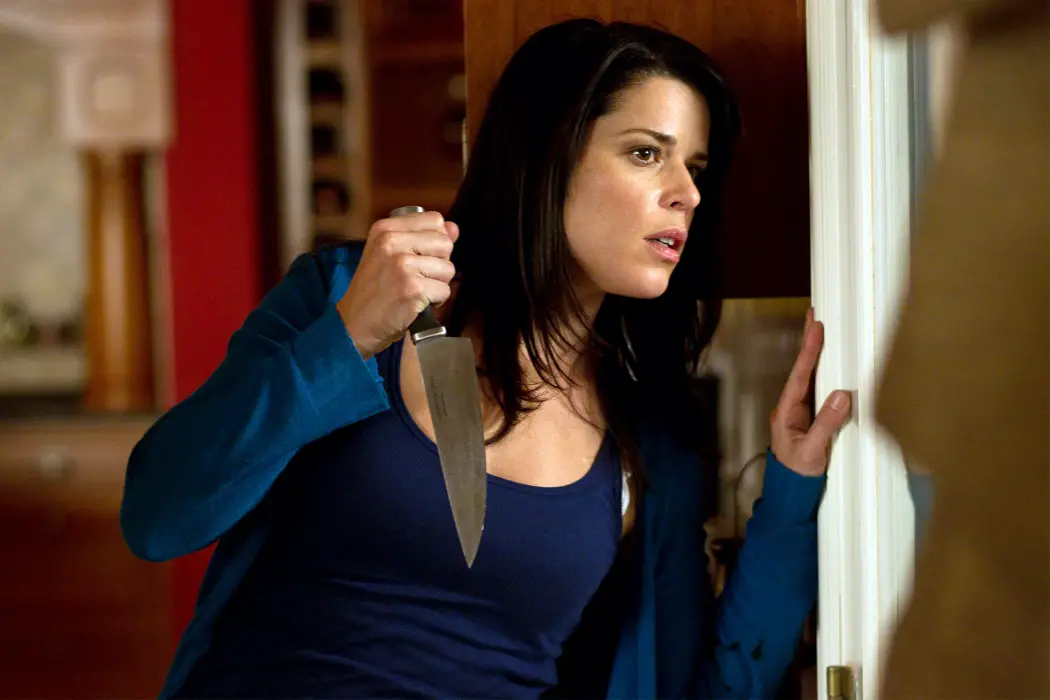
Stephanie Archer is 39 year old film fanatic living in…
Welcome back to the newest, and at times goriest, column here at Film Inquiry: Horrific Inquiry. Twice a month, I will be tackling all things horror, bringing two films back into the spotlight to terrify and frighten once more. And occasionally looking at those that could have pushed the envelope further. Join us as we dive deep into the heart of horror, but warning, there will be spoilers.
The release of Scream 5 is almost here! But first, we need to take a moment to look back on the final Scream installment Wes Craven would work on, a reboot that seemingly ignores its immediate predecessor while honoring its original works. It is a homage to horror, reboots, and its own franchise, all while carving a unique identity in the process.
Modernized Opening
Scream 4 opens with the Dimension Films’ logo, the all too familiar text accompanied with the now infamous sound of a phone ringing. It is the first initial mirroring to the original film that the fourth installment presents, instantly basking audiences in nostalgia and closing the gap in time between the trilogy’s release and this recent film. As Scream 4 dives further into its opening, viewers are introduced to Trudie (Shenae Grimes-Beech, 90210) and Sherrie (Lucy Hale, Pretty Little Liars) as they prepare to watch Saw 4. As Sherrie hangs up an old-school-looking cordless phone, the technological timeline is quickly excelled as they discuss Trudie’s online stalker. The familiarity will wash over as they are not only threatened by a mysterious caller but met with a graphic and violent end. As the opening titles for Stab 6 appear, there is an understanding that this film is not only aware of the franchise’s inception, it is prepared to lean all the way in.
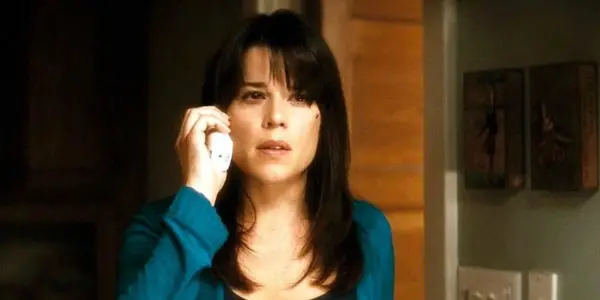
The opening of Stab 6 becomes the opening of Stab 7, the film unafraid to mockingly call out the lack of ingenuity and surprise in an unending slew of sequels that inevitably follow the success of a horror film. And while it does deliver its own surprises, especially in the continued inclusion of hot talent of the time in True Blood’s Anna Paquin and Veronica Mars’ Kristen Bell, viewers are finally brought to the true reality, Jenny (Aimee Teegarden) and Marnie (Britt Robertson) watching Stab 7, Jenny explains that the series of Stab is like a film within a film – further putting the inception of Scream front and center.
As Jenny is explaining why the Stab franchise is so good, she disappears to investigate a strange noise, successfully pranking Marnie with the Ghostface voice app on her iPhone. While successful in her prank, it is an early indication within Scream 4 of one generation’s horror becoming a new generation’s humor. While this concept is applicable to a newer audience’s reception of an old film, horror specifically, it also places today’s escalating desensitization under the microscope, the horror losing its effect to those that come to it later. You need to experience it, have been a part of it to appreciate and respect it.
Branching from its critical examination of Hollywood in Scream 3, Scream 4 takes this moment to reignite the flames surrounding the movie industry, not only its need to pump as much as it can from a potential franchise but how its constant need for sequels and merchandise minimizes the victims and the horror inflicted on others. With each sequel, the reality it is based on slips further and further away, driving the wedge of desensitization and loss of reality.
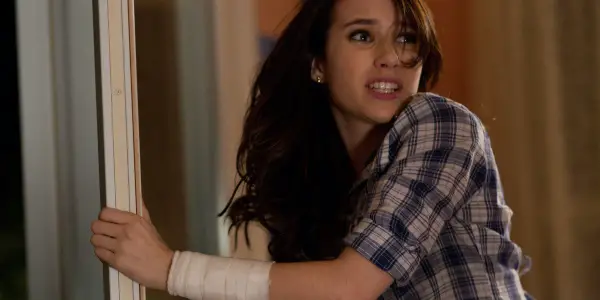
This absorption of another generation for another’s joke is continued following the deaths of Jenny and Marnie, Scream 4 bringing us back into the heart of Woodsboro, Ghostface masks placed on lamp posts throughout the town square as a joke to mark the anniversary of the Woodsboro murders.
Back to its roots
Scream 4 brings us back to the beginning, leaving its clever opening behind and reintroducing audiences to its central core of characters that have encompassed the franchise for decades. Scream, Scream 2 and Scream 3 each found Gale (Courteney Cox) and Dewey (David Arquette) apart yet always finding their way back to each other by the film’s end. At the end of Scream 3, Dewey proposed to Gale, pushing through their own horrors to create a new future for themselves. Unlike the previous films, Scream 4 finds them still together, Dewey answering his alarm to report to his post as the Sheriff of Woodsboro. Where Scream 3 found its characters as far away from their home base as possible, Scream 4 shows that they found the strength to start over and move forward.
This includes Sidney (Neve Campbell), whose return to Woodsboro on the anniversary of the murders is not out of memory, but out of her own escape from darkness. Where the last film had her living in the isolation of the woods and various security systems, Scream 4 welcomes her home, her path to a brighter future through the vulnerability she exposed through her book expressing not only her horrors but her recovery. With a successful book launch, Sidney’s journey and the end of her book tour have brought her home.
What they are about to find, the past never stays buried.
A New Generation and a new horror
As we watch this momentary reprieve of hope, we as audiences members already know horror lurks just around the corner. As news breaks out about the murders of Jenny and Marnie, Sidney is once again challenged to face the horrors of her past as Ghostface seems to toy with her, leaving one of the girl’s cellphones in the trunk of her car with posters of her book splattered in blood. As she looks at Dewey asking if it’s happening again, you can see the demons of her past rushing back.

And while this is a continuation of Gale, Dewey, and Sidney’s story and their unending match-up with death, Scream 4 is also a new platform to introduce a new generation of Woodsboro. Jill (Emma Roberts) is portrayed as Sidney’s cousin, a distant relative in communication, Scream 4 is the first film to embrace those outside of immediately Sidney and her father – and the trauma that rippled beyond the Prescotts following Maureen’s death. As Sidney’s Aunt and Jill’s mother, Kate (Grey’s Anatomy‘s Mary McDonnell) says, laments that she has scars too.
Jill radiates a feeling of Scream Sidney, having recently broken up with her boyfriend Trevor (Nico Tortorella), who is not only creepy but also intent on getting back together with her. Her friends each seem to encompass an essence of Tatum (Rose McGowan), yet uniquely their own strong female presence. Where Kirby (Hayden Panettiere) brings confidence and Olivia (Marielle Jaffe) the classic horror beauty, they are joined with the film’s own nod to Randy (Jamie Kennedy). in Charlie (Rory Culkin) and Robbie (Erik Knudsen), the head of Woodsboro High’s Cinema Club – and also the program heads of the underground Stabathon. And if you don’t get the vibes of Randy when they first come on screen, you will as they discuss the rules to a horror reboot – raising the stakes, as well as our expectations.
As bodies begin piling up throughout Woodsboro, the brutal murder of Olivia reminds of us the original. There is a feeling of the first film woven into every fabric of Scream 4, yet it begins to take on its own shape as we watch a new generation of teens on screen. It isn’t until the killers are revealed, and the reasons for the murders understood, that audiences will understand that the horror is not of the millennium (or the millennials themselves), but rather a new horror encapsulated within a new generational youth.
The need for followers.
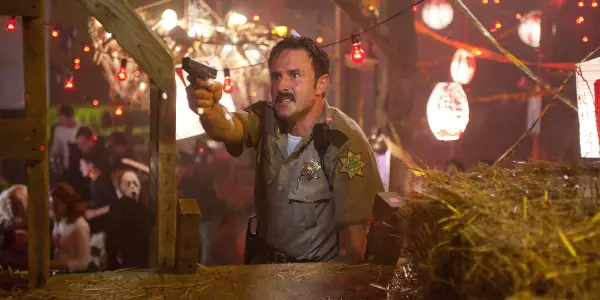
As Sidney is once again face to face with her potential killer, it is revealed to be Jill and Charlie – and as has been predicted, they have been recording their murders to share with the world. At the time of Scream 4, YouTube, viral videos and the start of the influencer was still fairly new, fresh, dangerous, and barely understood. The number of followers and views were becoming the metrics of consumable content and popularity.
Scream 4 tapped into the potential horror surrounding this new mass media form, leaning into the power of video and the popularity it derives, leaning into our need for it. As Jill murders Charlie, following a very reminiscent climax similar to Scream, she speaks to Sidney of being the sole survivor -she doesn’t need friends, she needs fans. She has orchestrated this entire horror, from its inception to its conclusion, creating a false version of herself during its process, only to be reborn with a new identity. She will be loved around the world, and the need to for this love, for the devotion and fan loyalty drives her to do all that is necessary to obtain it. There is an insanity in her eyes that truly speaks to the performance of Emma Roberts, but to the horrors embedded in this new element of our reality. As Scream has lent itself as a platform for critical examination, it once again takes on the role of a new generation.
Did you follow the clues?
I have seen Scream 4 a lot, maybe not as much as the other films, but enough. Why is this important? Because this is the first time I have watched the film and realized it alludes to its killer early on. And not killers, killer. Yes, from the beginning, Scream 4 is not afraid to dangle just a bit to see if we are clever enough to catch it.
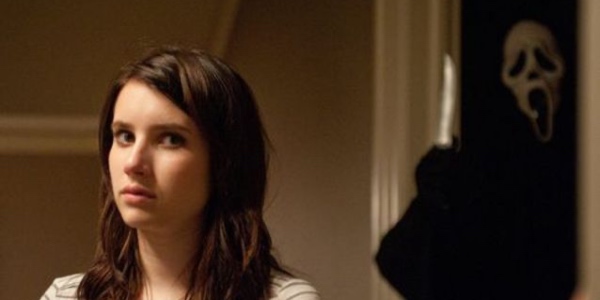
It’s quick and you will miss it moment, but in the very beginning, following the murders of Jenny and Trudie, Jill and her friends learn during class their friends have been slain. While the scene is its own standout to the power of technology and speed of communication, if you watch it again there is one person that does not look at their phone. One person who, when everyone around her is reacting in horror, stares straight ahead, waiting for the right moment to insert her shock and awe – Jill.
And this isn’t the only time it is alluded, though less obvious. Following Sidney’s car discovery and the murders of the teens, Olivia, Jill, and Kirby are brought into Dewey’s office to discuss anything they might be able to share about their friends. Jill is seated between her two friends, speaking briefly in the beginning, but refraining from speaking for most of the interview. As she reveals her master plan to Sidney later in the film, she expresses her shock at how many lies she told and how she was able to keep them straight. She was able to keep them straight because she only spoke or lied when necessary.
Was Scream 3 really forgotten?
Honestly, when I think back to the franchise, I find myself feeling as though Scream 3 was completely disregarded, forgotten with the fourth installment. After watching Scream 4 again for this column, I am happy to report that is not so much the case. While not blatantly clear, Scream 3 finds its own references strewn throughout the film. First and foremost, and most obvious, Dewey and Gale did get married and are still together.
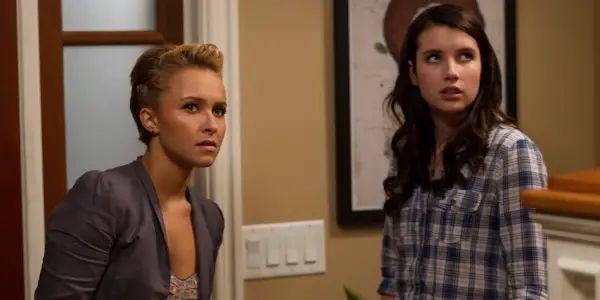
The next big reference that stood out that I had not noticed previously, was the quiet acknowledgment of the ghosts that had haunted Sidney in Scream 3, specifically the ghost of her mother. At one point in Scream 3, Sidney dreams of her mother’s ghost emerging from the forest, her decaying hands scrapping the window. As she starts by calling Sidney, it escalates into her claiming Sidney is just like her. Here, Sidney is emerging from Olivia’s house after the young teen was slain, neighbors gathering to see the horror, cries of “it’s all your fault Sidney” and “you’re just like your mother” filling the silence of the night. It screams back to the previous film while also unsettling the character of Sidney who had done so much work to escape the demons of the forest and the past.
Scream 3 has one other rather large reference – the concept of a sole survivor. Scream 3 is the only film in the franchise, thus far, to boast a single killer (though fan theories believe there may have been another, one who might just pop up in the new film). As Roman (Scott Foley) revealed to Sidney the idea of a sole survivor, the idea is briefly mentioned as his revenge and true primary focus takes center stage. Scream 4 leans heavily into this idea, welcoming two killers, but the true motivation to be the one and only. To be a victim for life. Where Roman flirted with the idea, Jill embraces it wholeheartedly.
Conclusion
I still love Scream 4 as much as I did when I first saw it. It is a clever reboot, reuniting writer Kevin Williamson and director Wes Craven and honoring the original while embracing a fresh, new, and horrific new decade. We are also given new sides to the characters we have known for so long while meeting new faces to infuse the franchise. In one of the biggest character growths, and a fast becoming observation of rebooted series with original characters is Sidney. In Scream 4 she is no longer the reluctant fighter, instead choosing to run into danger and proving, much like Lori in Halloween, that as much as the killer is superhuman in strength and even speed, the final girl is in her own right superhuman herself.
As we leave Scream 4 behind, we turn our sights to the upcoming release of Scream, the film’s fifth installment. It will be the first film without Craven at the helm, but it set to reclaim the magic of the original. And from what I am hearing from early reactions, this is not one to miss.
Have you seen Scream 4? What did you think? Let us know in the comments below!
Does content like this matter to you?
Become a Member and support film journalism. Unlock access to all of Film Inquiry`s great articles. Join a community of like-minded readers who are passionate about cinema - get access to our private members Network, give back to independent filmmakers, and more.













